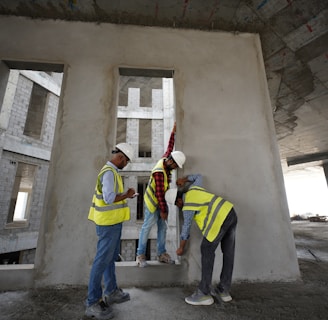
Material Testing
Construction testing involves various methods and procedures to ensure that materials, components, and systems meet specified standards and regulations. It plays a crucial role in ensuring safety, durability, and performance in construction projects. Here are some common types of construction testing:
11/18/20241 min read


1. Material Testing:
- Concrete Testing: Compressive strength tests (e.g., cube or cylinder tests), slump tests for workability, and air content tests.
- Soil Testing: Compaction tests, shear strength tests, and permeability tests to assess the soil's load-bearing capacity.
- Steel Testing: Tensile strength tests, yield strength tests, and weld testing.
2. Structural Testing:
- Load Testing: Assessing how structures perform under various loads (static or dynamic).
- Non-Destructive Testing (NDT): Techniques like ultrasonic testing or magnetic particle testing to identify flaws without damaging the material.
3. Environmental Testing:
- Air Quality Testing: Checking for pollutants and ensuring compliance with health standards.
- Water Quality Testing: Assessing the suitability of water sources used in construction.
4. System Testing:
- HVAC Testing: Evaluating heating, ventilation, and air conditioning systems for efficiency and compliance.
- Electrical Testing: Checking wiring, circuits, and systems for safety and functionality.
5. Performance Testing:
- Energy Performance Testing: Assessing the energy efficiency of buildings, often through blower door tests or thermal imaging.
6. Quality Control Inspections: Ongoing inspections throughout the construction process to ensure adherence to specifications and standards.
These tests help mitigate risks and ensure that construction projects are completed safely and effectively. If you have a specific area of construction testing in mind,
